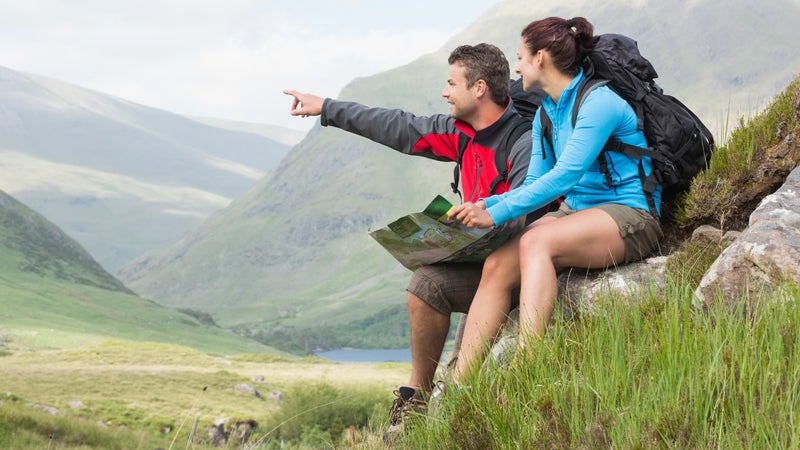You might think the primary purpose of a GPS device is to help you find a new destination. You’re wrong.
For serious outdoor enthusiasts, these gadgets play an even more important role—getting you home. You can wander for hours in the woods, but eventually you need to return to base camp. We tested four handheld GPS models, each with a feature to help you backtrack and get home as quickly as possible.��
Bushnell BackTrack D-Tour ($150)
Best For: Short day hikes
�ճ�����isn’t intended for serious mountaineering or endurance treks. But with only four buttons, it is��incredibly��easy to use. Click the large Home icon to plug in your base position. From then on, the��BackTrack��will leave digital breadcrumbs marking your trail on a map so you’ll never get lost again. The markings get farther apart as you hike, making the��breadcrumb��trail almost infinite. The trail logging feature can be set to record 24 or 48 hours of hiking time. ��
You can mark up to five locations, check your altitude and temperature, and see current GPS coordinates. The GPS is rated for��IPX4��waterproofing—it’s splash-resistant, but shouldn’t be submerged in water. The��BackTrack��D-Tour uses replaceable AAA batteries.��
Magellan eXplorist 350H ($250)
Best For: Hunting trips��
�ճ�����handheld emphasizes simplicity. It uses large block letters with options like Hunt and Hike, and you can select a Track Me option that will record your movements automatically. From there, it’s easy to navigate back to your campsite or car. It only takes a few clicks to mark spots like ranger stations and hunting perches. It will store this��breadcrumb��trail even if the device runs out of juice—just pop in new AA batteries, and the device will keep recording the route.
Like the Garmin��GPSMAP��64, the��350H��can be submerged for up to 30 minutes. The downside—there’s no SOS feature or option to share your location with others.��
��
Garmin GPSMAP 64 ($299)
Best For: Rugged backcountry treks
The����handheld is a definite improvement over your smartphone. There’s a large��carabiner��clip that attaches to your belt or backpack, and the buttons are designed for quick tapping on a trail. ��
The Tracks option automatically marks your route with a colored line. Plus, you can use the reverse track log to follow your path back to camp. You won’t get voice prompts like you would with a car navigation device, but you will see the route clearly marked on the map.
You can also drop breadcrumbs to help you retrace your steps—the device allows for up to 10,000 of these points on the route. If the��GPSMAP��64 happens to fall into a lake while you're trying to find the car, have no fear. The gadget can stay submerged in three feet of water for up to 30 minutes. There’s no SOS feature, although you can pair the device with the Garmin Fit app on your phone to share your GPS location.
DeLorme inReach SE ($300)
The����offers much more than simple return-home features. It can send an SOS message over a satellite single if you’re in danger, alerting emergency response teams to come find you.
It also has a unique tracking system. When you start a hike, you can send an e-mail to friends and create your own��MapShare��page on the Web. The page shows a map, your start and end times, and your exact GPS coordinates. The coordinates, speed, heading, and elevation are uploaded to the site every ten minutes. ��
Use your smartphone to follow your��MapShare��route back home. To do that—and to see your traced route on a topographic map—you’ll need to sync the��InReach��SE handheld with your Android or iPhone over Bluetooth. You'll also need to download the free��DeLorme��Earthmate��app.
The��InReach��is fully waterproof, submersible, rustproof, and impact-resistant. You'll pay about $10 per month for the satellite reception. In March,��DeLorme��says it will start offering contract-free plans for the service, provided by Iridium.


